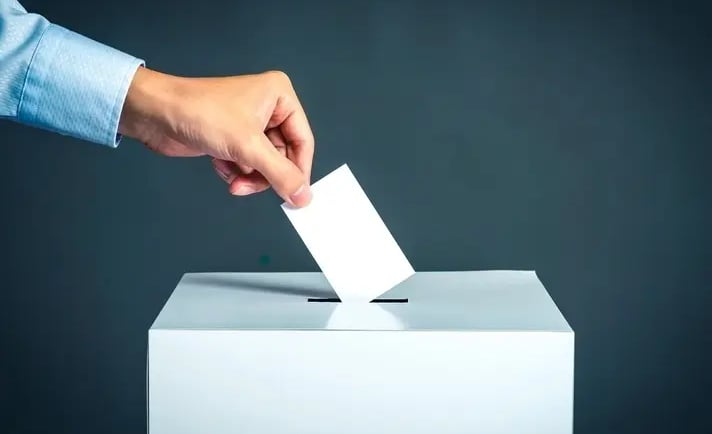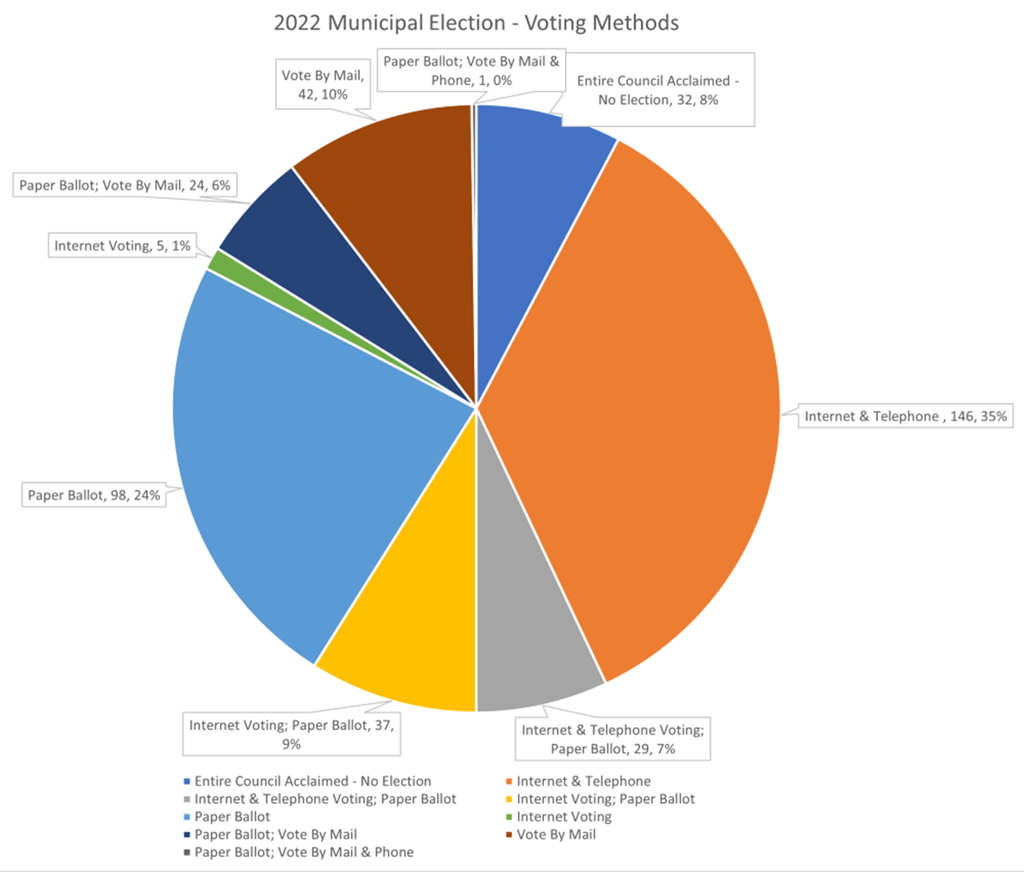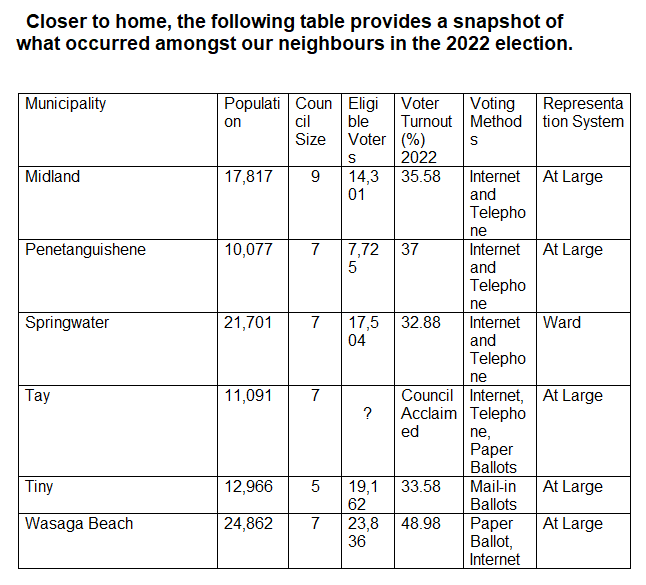Revitalizing Voter Engagement: Addressing Low Turnout in Tiny Municipal Elections
Voter turnout in Ontario municipalities has steadily declined over the past four decades, with participation in Tiny Township's 2022 election dropping to 33.58%. This trend highlights the need to explore causes of voter apathy and suggests that simplifying voting methods, such as reintroducing telephone voting and leveraging improved internet access, could enhance voter participation.
TinyTRA
7/20/20246 min read


One of the cornerstones of a democratic system is the right, and perhaps for the purposes of this discussion, also the responsibility of those living under this system to cast ballots to elect those representatives that they believe to be their preferred leaders. Currently, In Canada, voter turnout statistics are disappointing to say the least. It is not uncommon for elected individuals to have less than 20% of the eligible votes cast in their favour.
Participation, in the form of casting ballots, in Ontario municipalities has seen a steady decline during the past four decades. Information provided by the Association of Municipalities of Ontario (AMO) shows that the voter turnout rate for municipal elections has dropped steadily from 48% of eligible voters in the 1982 election to 38.3% in the 2018 election. The 2022 election in Tiny yielded only 33.58% of eligible voters casting a ballot. This is a very disturbing trend.
To quote the words of former Ontario cabinet minister John Snobelen, “Democracy Hinges On An Engaged Public”. So, what can be done about our low public participation??
First, I believe that we must try to determine the cause(s) before we can offer solutions. Determining the cause is a complicated task as there appears to be myriad reasons that may or may not include all of the following, which is not meant to be an inclusive list:
Public apathy; loss of respect for politicians; sense of being unheard; poor understanding of the impact that political decisions, especially at the local level, have on quality of life issues; poor voting options; the seeming unwillingness of individuals who possess the honour, integrity, intelligence, and abundance of common sense and good judgement to stand for election; busy lives that don’t allow the time required to follow the governance issues and subsequent decisions being made, with the energy and effort required; the perceived lack of openness and transparency demonstrated by some politicians/governments; or simple mistrust in the processes used to expend taxpayers’ money and the motivation for doing so. The list can go on and on.
I would like to focus on one reason that I feel is rather easily corrected, although there is no guarantee that it would motivate more eligible voters to play a larger role in electing their representatives. On the other hand, it seems logical that it would not lead to worse voter turnouts. I am proposing a change to the current Vote by Mail (VBM) method, which is the only option currently available to voters in Tiny and has been for many years. One of the easiest methods that can be used to encourage better voter turnouts is to simplify the process of casting a ballot. This is especially important in those municipalities that have a strong mix of permanent and seasonal residents.
Currently, in Tiny Township, there is only one method used, which is the Vote by Mail (VBM) method. The subject of alternate voting methods has been bandied about for many years, and in fact, telephone voting has been an option that was available some years ago but later discontinued. Perhaps the time has come to revisit this subject. In the minds of many, the VBM system is outdated and in need of change. One of the only silver linings in the COVID cloud has been the realization, by both the provincial and federal governments, of the importance of access to reliable internet broadband services in rural municipalities like Tiny. A great deal of work has been completed over the past few years to ensure that internet services and cellular phone services are now available to most areas of Tiny.
Prior to both the 2018 and 2022 Tiny elections, staff reports were provided to Tiny’s council offering alternate voting methods and, in both cases, the Council of the day voted to maintain the status quo. Reports are available below, by double-clicking the icons.


These reports included the following descriptions of the alternate options considered:
Vote By Mail (VBM)
VBM is a paper-based alternative voting method in which a package containing instructions, a ballot and a voter declaration form is mailed to every qualified elector on the voters list. The elector will mail back their completed ballot and declaration form, each in a separate prepaid postage envelop. On voting day, the municipality tabulates the ballots using a central count tabulation system, with results being transferred to an election reporting system. This method of voting provides for the ability to start tallying votes through the tabulators early on Election Day resulting in the delivery of unofficial election results more quickly. It is important to note that, the instructions provided by Tiny staff in the mailed ballot information requires that the Election Return Envelope be mailed a full 11 days before the actual day of the election unless the ballot is delivered to the township office on election day. This requirement creates a very unfair advantage to area residents over seasonal residents. Mailing in the ballot 11 days before the actual election day shrinks the ability to gather and process candidate campaign information for those responding by mail, creating an uneven playing field.
Internet Voting
Internet Voting: The qualified elector will receive a voter package by mail (voter information letter) containing instructions on how to access and complete their ballot via the internet. The elector connects to the voting website from their computer, iPhone, android phone or tablet. The elector is required to enter their provided PIN and then to authenticate their identity (i.e. through the entry of their date of birth) and to verify that they are a qualified elector (similar to signing the declaration form provided in the VBM kit). If authentication is successful, the elector will obtain access to an electronic ballot. The elector may then complete, review and verify their completed ballot to make any changes prior to submission. Once submitted, the results are encrypted and kept anonymous. The elector is issued a receipt and is now blocked from voting again. Once voting has ended, the results are immediately tabulated and transferred to a results reporting system. The results can be viewed in the Election Manager along with various reports on voting activity before publishing them. Results can be verified by downloading a file containing votes and receipt codes
Telephone Voting
Telephone Voting: The qualified elector will receive a voter package by mail (voter information letter) containing instructions on how to access and complete their ballot via the telephone. The telephone voting system relies on the voter to process an audio ballot by way of dialing on the key pad. After voting selections are made for each office, the voter will be prompted to review their decisions. Once confirmed by the voter, the final ballot data is transferred to a secure server which is tabulated at the end of Election Day and transferred to a results reporting system.
As the pie chart below indicates, of the 385 elections conducted in 2022, only 11% of Ontario’s municipalities offer only the VBM option, of which Tiny is one. However, internet and/or phone voting was provided in 57% of municipalities. Of particular importance, the trend towards internet/phone voting climbed by 10% from the 2018 election to the 2022 election. Recent advancement in Internet/broadband access throughout the province is the primary factor in this recent surge.


As one can see, Tiny is the only local municipality that does not provide internet or telephone voting.
To help to put things into perspective, I reviewed the voting methods and options for every Ontario municipality, of which there are 41, that are within 1,000, plus or minus, of Tiny’s population. The results reveal that of the 41 reviewed, only 6 permit only the vote by mail option that Tiny does.
I believe the time has come for Tiny to embrace newer and more reliable and secure technology to provide a more convenient way for residents and property owners to cast their ballots by replacing our antiquated VBM system with an internet/phone voting system in time for the 2026 election. The reasons are many, as described below by an earlier staff report to Council.
Benefits of Internet/Telephone Voting methods:
Easy, convenient and accessible.
Privacy of vote at home without having to travel.
Anytime, anywhere voting until 8:00 p.m. on October 24, 2022.
Longer voting period. • Effective method to capture both permanent and seasonal residents.
Eliminates need for advance vote.
Eliminates voting by proxy.
Eliminates the possibility of spoiled ballots.
Fewer election staff required.
Eliminates concerns related to COVID-19 and cost of associated safety measures.
Help centre would be provided at Township Hall or other suitable location.
Based on costing projections included in the two staff reports above, it seems to be apparent that this transition to voting with current technology would actually reduce the municipality’s cost of conducting the 2026 municipal election. It is time to allow our residents and property owners access to a far more convenient and accessible system for choosing our representatives.
-Tony Mintoff, July, 2024


